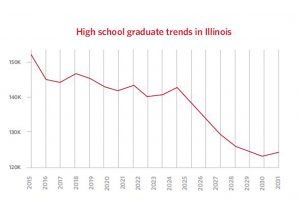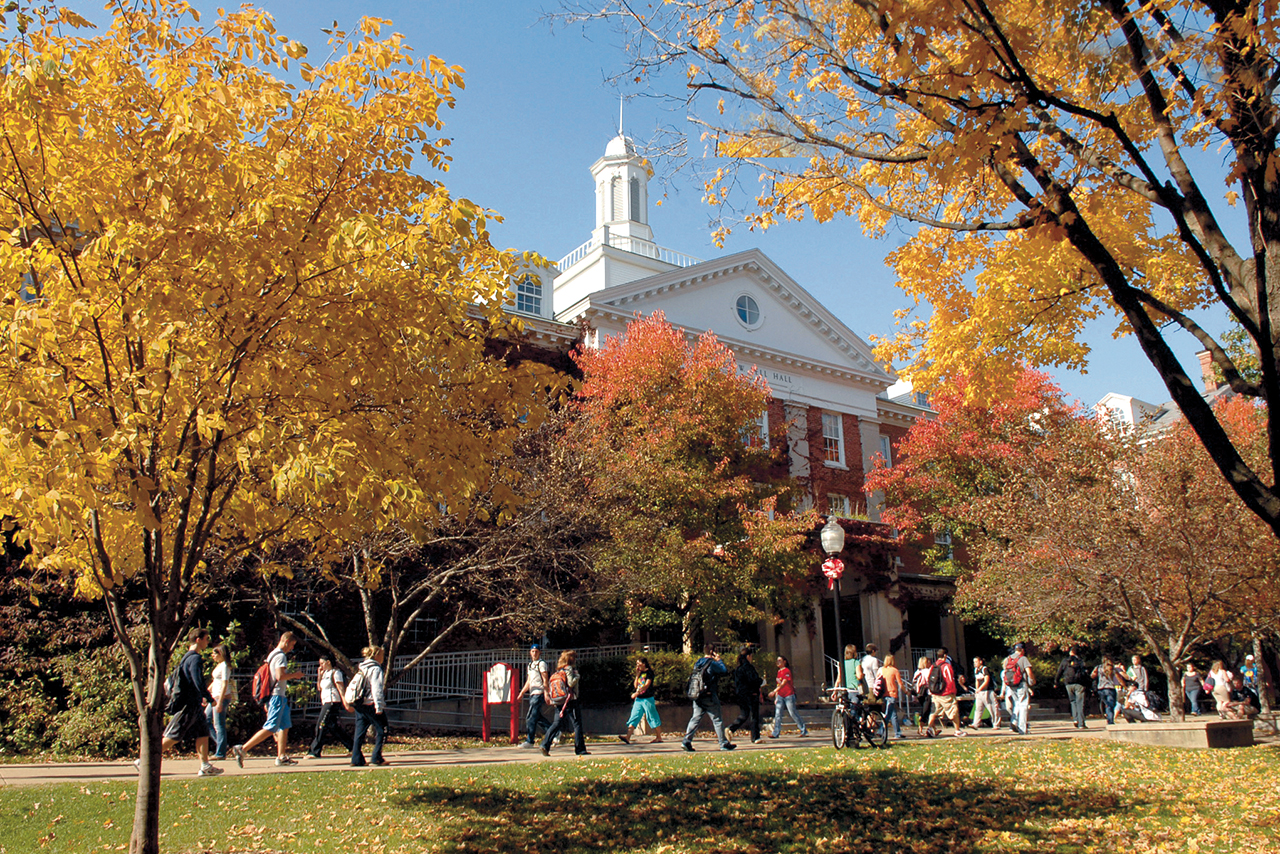Recruiting the next incoming class is a never-ending job for the staff in Admissions. Jeff Mavros, M.S. ’06, can attest to the workload, as well as the apprehension each fall semester until enrollment figures are announced on the 10th day of classes.
As the Director of Admissions, Mavros knows that student tuition and fees are a significant portion of ISU’s overall budget. The total enrolled has an impact across campus, from the number of faculty and class sessions needed to meeting housing and dining needs.
Numbers for this academic year remain strong, with an enrollment of 20,784 students. Nearly one-fourth are from traditionally underrepresented groups, with 3,352 incoming freshmen. Mavros is grateful for the campus-wide teamwork he credits for this healthy enrollment, especially given universities and colleges across the state are seeing enrollments drop.
He is also, however, growing concerned as to how Illinois State will overcome increasing challenges to attract students in the near future. Even the fact ISU remains a top choice for students and has set consecutive record-breaking freshman enrollments in recent years does not lessen the reason for worry about the obstacles ahead.
“We are looking at a confluence of issues,” Mavros said, including a “demographic trough” as the pool of eligible incoming freshmen shrinks. He cited research done by Western Interstate Commission for Higher Education, which predicts stagnation in the number of school graduates between 2014 and 2023.

The pool of high school graduates is shrinking. In Illinois, there has been predominantly a decline in the total number of graduates annually since the 2011-2012 academic year. The Western Interstate Commission for Higher Education projects the number will drop to 124,600 students by 2031.
Overall growth is not expected until 2024, with the outlook for the Midwest equally concerning. The commission projects a regional drop from about 762,000 graduates in 2013 to approximately 669,000 by 2030. The pool shrinks further for ISU given the fact that nearly half of Illinois high school graduates leave the state for college, according to the Illinois Board of Higher Education.
“There is a crisis in confidence in Illinois, a crisis of faith,” Mavros said. “Illinois is at the top of the list nationally for the number of high school graduates who exit the state to pursue a higher education degree.”
Ongoing financial struggles within Illinois are not a help in trying to reverse that trend.
The state has repeatedly made national headlines for its financial woes, including lawmakers’ inability to approve a state budget the past two fiscal years.
Mavros understands families are consequently leery about their student beginning a degree program at a university reliant on some state funding. He acknowledges that the cost to study at Illinois State is a serious investment, “and even our in-state tuition rate can be relatively expensive for students from other parts of the country.”
One option to attract more students is to lower academic standards, which is not under consideration at ISU. This year’s incoming freshman students had an overall 3.4 on a 4.0 GPA scale and an average ACT score near 24.
The best way to offset these negatives is to leverage Illinois State’s best assets, including its commitment to individualized attention—something that is tough to find at any other university of comparable size.
Alumni can help recruit by sharing their Redbird story.
Mavros knows that prospective students who consider ISU are impressed with the opportunities to blend academic growth with civic engagement. Those who make the effort to visit campus are more likely to attend.
The key is to capture the attention of a high school graduate who is being pursued by schools across the country. For Mavros, one of the best ways to do that is by rallying alumni to share their Redbird story.
“We have to get on the radar of prospective students. That is the biggest issue, finding a way for students to at least give Illinois State consideration. Word of mouth is huge,” Mavros said, asking alumni to share about their Redbird experience. He has no doubt that doing so will bring students to ISU, and keep the University strong.
Susan Marquardt Blystone can be reached at sjblyst@IllinoisState.edu.

